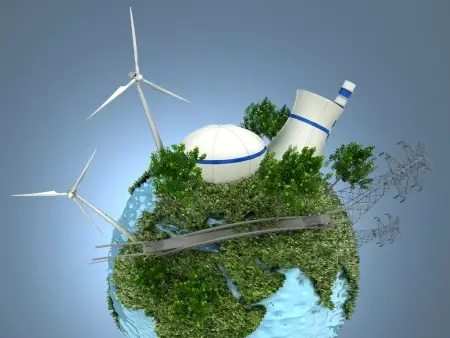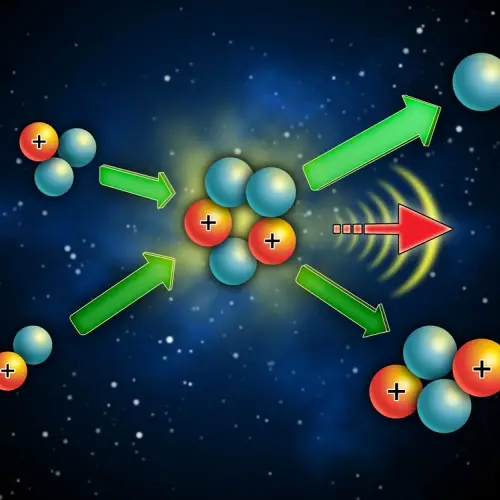
In the world we live in, energy is a fundamental pillar that drives our daily lives. Energy allows us to light our homes, move vehicles, keep our electronic devices running, and much more. But where does this energy come from?
In this section, we will explore the concept of energy sources. Energy sources are the resources, both natural and man-made, from which we draw the energy needed to meet our energy needs. These energy sources encompass a wide variety of forms, from solar, wind, and hydroelectric power to fossil fuels , nuclear power , and more.
Throughout this section, we will impartially examine the different categories of energy sources, considering their advantages, disadvantages and their influence on the environment.
What is an energy source?
An energy source is a natural source or resource from which we obtain the energy we need to run our lives. This energy can be used to light our homes, power our cars, heat water, or even charge our electronic devices.
There are different types of energy sources, such as solar energy, which comes from sunlight ; wind energy , which is generated from the wind; hydroelectric energy, which takes advantage of the flow of water in rivers and dams; and fossil energy, which is obtained from resources such as oil and natural gas .
There are also more modern energy sources, such as nuclear energy, which is generated from nuclear reactions, and geothermal energy , which comes from the Earth 's heat . Each energy source has its own advantages and disadvantages in terms of availability, environmental impact, and costs.
Types and classification of the main energy sources
Energy sources are fundamental to the functioning of modern society, and can be classified mainly in two ways: according to their origin as primary or secondary, and according to their capacity for regeneration as renewable or non-renewable.
Classification according to its origin
- Primary sources : Primary energy sources are those found directly in nature and have not been subjected to any transformation process. These include resources such as oil, coal, natural gas, wood or biomass, nuclear fuels, and hydroelectric, wind, geothermal and solar energy. These primary sources are essential because they are the basis for the production of energy in its simplest and most direct form.
- Secondary sources : In contrast, secondary energy sources are those obtained from the transformation of primary sources. Electricity is the most common example of a secondary source, as it is generated through the conversion of primary energy through different processes, such as the burning of fossil fuels or the use of hydroelectric energy.
Classification according to their regeneration capacity
- Renewable energy sources: These are sources that regenerate naturally and are virtually inexhaustible, such as solar, wind, hydroelectric, geothermal and biomass energy.
- Non-renewable energy sources: These are those that exist in limited quantities and are depleted with use, such as fossil fuels (oil, coal, natural gas) and nuclear fuels.
Main source of energy on our planet
Most of the world's energy resources have the Sun as their primary source.
Solar energy is conserved indirectly in the form of fossil energy or as directly usable energy (e.g. winds ).
Even hydroelectricity derives from solar energy, which causes water to evaporate and subsequently condensate when clouds meet air from cold weather fronts or high mountains.
Non-renewable sources
Non-renewable energy sources are energy resources that do not have the capacity to regenerate or whose consumption rate is greater than their regeneration rate.
The availability of these sources is currently still quite high and, consequently, the cost relatively low.
The main non-renewable resources are the following:
Fossil fuels
 Fossil fuels, such as coal, oil and hydrocarbons, especially methane, represent one of the main sources of energy worldwide. The combustion of these natural resources generates a large amount of energy, which is used in various key sectors for the development and functioning of modern society.
Fossil fuels, such as coal, oil and hydrocarbons, especially methane, represent one of the main sources of energy worldwide. The combustion of these natural resources generates a large amount of energy, which is used in various key sectors for the development and functioning of modern society.
First, a significant portion of this energy goes into heating systems, providing heat in homes, industries, and other infrastructure. In addition, fossil fuels are essential for the operation of engines in different modes of transport, such as cars, airplanes, and ships. However, their most prominent use is in the generation of electric power, where the combustion of coal and natural gas in thermal power plants produces the electricity that supplies millions of homes, businesses, and industries.
Despite their energy efficiency, the use of fossil fuels poses significant environmental challenges due to their greenhouse gas emissions.
Nuclear power
Nuclear energy can be seen as the mother of all energies, on earth and even in the universe. In fact, all energies, from solar to fossil fuels , from wind to hydroelectric, are nothing more than a by-product of the transformation of this type of energy.
There are two types of nuclear reactions: fission and fusion. Today, all nuclear reactors are fission reactors for technical reasons.
Atomic fission energy is based on breaking a heavy atomic nucleus (usually Uranium-235) to obtain two smaller nuclei, which weigh less than the original nucleus. The small difference in mass is capable of producing a large amount of energy.
Nuclear fission plants currently produce 16% of the world's electricity.
Renewable energy sources
Renewable energy sources are those types of energy that are inexhaustible. Their use does not imply a reduction in the resource.
The main renewable energy sources are the following:
Firewood and biomass
The combustion of biomass, wood or other readily available organic materials represents the oldest way of producing heat and therefore energy.
Lately, however, a renewed awareness of the fight against climate change, combined with a growing concern for finding energy resources, have brought this energy source back into the spotlight.
Solar energy
Solar energy is the fundamental source of energy for almost all activities on Earth. Even fossil fuels, such as oil, are an indirect form of solar energy. This is because they come from the organic matter of plants and other organisms that, over millions of years, captured the sun's energy through photosynthesis. This organic matter, subjected to pressure and heat beneath the Earth's surface over geological ages, was transformed into the oil reserves we use today.
Solar energy can be harnessed in several ways, the most notable being the following:
- Photovoltaic solar energy : This method is based on the photovoltaic effect, a physical phenomenon in which certain materials, such as silicon, generate electricity when exposed to sunlight. Photovoltaic solar panels directly convert solar radiation into electricity, providing a clean and renewable source of energy.
- Solar thermal energy : This approach focuses on the direct use of the sun's heat. Solar collectors capture and concentrate solar radiation to heat fluids, which can then be used to generate steam and, consequently, electricity, or to provide heating in domestic and industrial applications.
Wind energy
Wind power is one of the oldest sources of energy: windmills have been used since the 7th century AD to convert wind energy into mechanical energy.
In modern times, wind turbines are used to produce electricity. A turbine consists of a large rotor with three blades, which is set in motion by the wind.
The disadvantages are the geographical location, the large spaces required for centralized production and the environmental impact.
Hydroelectricity
Hydroelectric power is a clean energy that harnesses the potential energy of water located at high altitudes in mountain basins, which, when falling, acts on a turbine, producing electricity. The principle is the same as in a thermal power station: the difference is that the medium that makes the turbine turn is water, not steam.
Currently, 16% of the world's electricity comes from hydroelectric sources: one of the disadvantages of hydroelectricity, however, is precisely the environmental and social impact of dam construction.
Geothermal energy
Geothermal energy is energy generated by geological sources of heat and can be considered a form of renewable energy. It is based on the thermodynamic use of the Earth 's internal heat , fueled by the thermal energy released in the nuclear decay processes of radioactive elements such as uranium, plutonium or thorium.
As you penetrate deeper, the temperature gradually becomes higher, increasing by about 30 °C per km in the Earth's crust.
The exploitation of this source, in the case of high enthalpy geothermal sources , consists of conducting the vapours from underground water sources towards special turbines used to produce electrical energy. And in the reuse of hot water vapour for urban heating, greenhouse crops and thermalism.
Marine or ocean energy
Ocean energy refers to the set of energy contained in various forms in the seas and oceans. This immense amount of energy can be extracted from seawater with different technologies: based on the kinetic energy of fluids (currents, waves, tides) and on the gradient (thermal and saline). Today, many energy extraction systems have been tested and some are already in a pre-commercial stage.
Nuclear fusion
 Nuclear fusion is a variant of nuclear energy . It involves the joining of the nuclei of two hydrogen atoms, releasing a huge amount of energy.
Nuclear fusion is a variant of nuclear energy . It involves the joining of the nuclei of two hydrogen atoms, releasing a huge amount of energy.
This process produces energy from the Sun. It generates large amounts of heat that could be used to generate electricity. However, the temperatures and pressures required to maintain fusion make it a very difficult process to control.
One of the potential advantages of fusion is the theoretical possibility of delivering large amounts of energy safely and with relatively little pollution.
The fuel for nuclear fusion is hydrogen. Because of the huge presence of hydrogen on the planet, nuclear fusion would be considered a renewable energy source.
Historical evolution of energy sources
 The history of energy sources is a reflection of human development and technological evolution. Since prehistoric times, humans have used various energy sources to meet their basic needs, such as cooking, heating and lighting.
The history of energy sources is a reflection of human development and technological evolution. Since prehistoric times, humans have used various energy sources to meet their basic needs, such as cooking, heating and lighting.
In ancient times, biomass , especially firewood, was the main source of energy. Early humans relied on fire, which they obtained by burning wood and other organic materials, not only for cooking and heating, but also as a tool in the manufacture of utensils and in hunting.
Over time, civilizations began to harness other sources of energy. For example, water power was used from at least the 3rd century BC in ancient Greece and Rome, where water mills were used to grind grain and perform other mechanical tasks. Wind power also began to be used, primarily in navigation, with the invention of sails that allowed ships to travel great distances.
The use of fossil fuels became popular during the Industrial Revolution in the 18th century. Coal was the first widely exploited fossil fuel, powering the first steam engines that powered factories, trains and ships. This change marked a turning point in human history, allowing for unprecedented economic growth and urban development.
In the late 19th and early 20th centuries, oil and natural gas began to gain importance, especially with the invention of the internal combustion engine and the rise of the automotive industry.
Finally, in the second half of the 20th century, nuclear energy emerged as a new source of energy, offering a powerful but controversial alternative to fossil fuels. As the century progressed, renewable sources such as solar and wind were also rediscovered in response to growing concerns about the depletion of non-renewable resources and environmental impact.